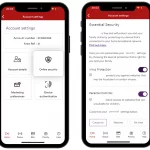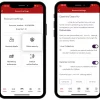North Yorkshire UK Starts Build of £15.1m Full Fibre Network
The North Yorkshire County Council (NYCC) has announced that they’ve started the build phase of their £15.1 million project to deploy a new Gigabit capable “full fibre” network, which will be used to help connect some 370 public sector sites (e.g. council buildings, hospitals etc.) across the county over the next 18 months.
The funding was allocated to the council as part of their original bid in 2017/18 for a slice of the Government’s (DCMS) Local Full Fibre Network (LFFN) challenge fund (here), which was supported by the local authority’s wholly-owned high-speed connectivity provider NYnet.
The project proposes to deploy a new full fibre network across parts of multiple towns and communities including Harrogate and Knaresborough; Skipton; Northallerton; Ripon; Richmond; Leyburn; Scarborough; Whitby; Thirsk; Tadcaster; Pickering; Stokesley and Great Ayton; Settle; Selby; Easingwold; Malton and Pickering.
Advertisement
The build itself, which is being undertaken by contractor SCD, has now begun in Selby and Easingwold, with Malton and Pickering expected to follow later this month.
Don Mackenzie, NYCC Executive Member for Access, said:
“Efficient digital connectivity is important in creating and maintaining successful local economies and communities, particularly in North Yorkshire’s rural areas. The benefits of this project to public sector organisations in North Yorkshire are significant.
This further improvement to our digital infrastructure will help to deliver national strategies such as the NHS long-term plan and the Department for Education’s programme to boost technology in our schools. More widely, it will also provide gigabit opportunities to private sector businesses and local residents throughout the county.”
Scott Walters, CEO of NYnet, said:
“We are very excited to be entering the delivery phase of our new full fibre network, which we are delivering in partnership with SCD Group. This new network will improve speeds and user experience for many public sector bodies in North Yorkshire including schools, GP surgeries, hospitals and libraries.”
Generally this approach is very reflective of the anchor tenancy model that has been seen in so many other UK cities. Further down the road this can sometimes enable other operators – like Cityfibre (Vodafone) – to more easily come in and build new Fibre-to-the-Home (FTTH) style broadband ISP networks for local residents and businesses (i.e. this part tends to require commercial investment).
We should point out that some of the listed towns already have Gigabit-capable broadband networks or deployments taking place (e.g. TalkTalk’s FibreNation project in Harrogate).
Mark is a professional technology writer, IT consultant and computer engineer from Dorset (England), he also founded ISPreview in 1999 and enjoys analysing the latest telecoms and broadband developments. Find me on X (Twitter), Mastodon, Facebook, BlueSky, Threads.net and Linkedin.
« ISP Vodafone UK Set to Increase Home Fibre Broadband Prices


















































Why finish rural (another 20k plus in North Yorkshire) when you can create Digital Region II?